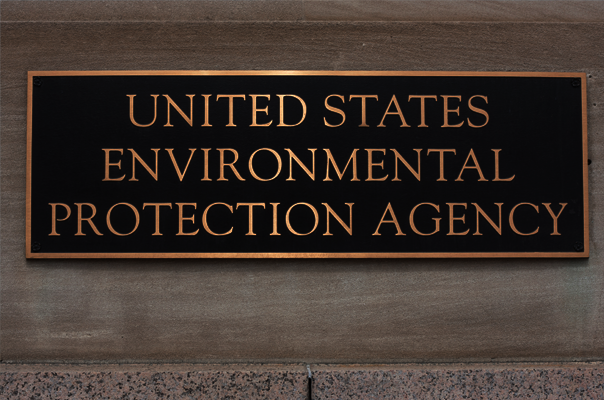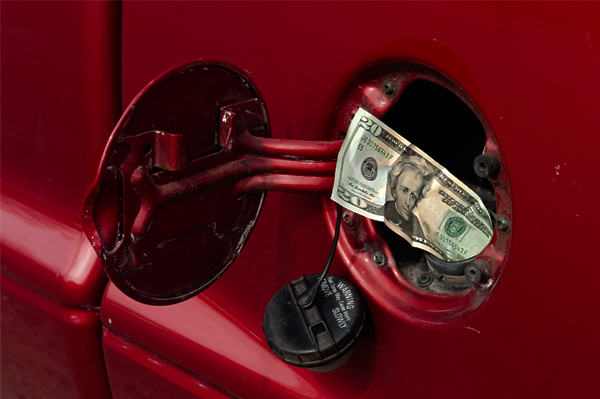Prepare for Higher Gas Prices
EPA Will Increase Gasoline Prices and Reduce Fuel Economy with Its Bid to Further Reduce Sulfur in Gasoline
The U.S. Environmental Protection Agency (EPA) has decided that the sulfur content of gasoline must be further reduced from 30 parts per million to 10 parts per million on an annual average basis by January 1, 2017. This will bequeath to President Obama’s successor the immediate economic problem of higher gasoline prices for consumers upon assuming office. Refiners are currently meeting the Tier 2 vehicle standards that reduced sulfur in gasoline from 300 parts per million to 30 parts per million, a 90-percent reduction. Refiners estimate that the proposed new rules will cost the American motorist as much as an additional 9 cents per gallon because it would require additional hydrotreating equipment to remove sulfur as well as revamps and expansions to existing hydrotreaters to achieve the reduction.
However, not only will the rule increase the price of gasoline, but it changes the “vehicle certification fuel” to E15 (gasoline that is 15 percent ethanol). This change will lead to lower fuel economy in automobiles and it will cause even more problems for small engines such as boat engines, lawn mowers and weed eaters.
Tier 2 and Proposed Tier 3 Vehicle Standards
In 1999, the EPA announced its Tier 2 regulatory framework, which tightened emission standards for the first time on all passenger vehicles, including light-duty trucks and SUVs. Also in 1999, EPA introduced the concept of treating “vehicles and fuels as a system.” As a result, the Tier 2 standards not only dealt with passenger vehicles, but also placed mandates on the refinery industry because certain emission reduction technologies work better with lower sulfur content in gasoline. The Tier 2 vehicle standards lowered the vehicle standard for sulfur in motor gasoline in stages down to an average of 30 parts per million with an absolute cap of 80 parts per million[i] in 2006, from a previous standard of 300 parts per million, a 90 percent reduction.
The EPA recently announced its next level of controls, called Tier 3, with sulfur levels down to 10 parts per million. EPA’s proposed Tier 3 standards would significantly tighten the constraints on both passenger vehicles and the refining sector. A study by Baker & O’Brien, a consulting company, finds that the new Tier 3 proposal would impose upfront compliance costs of almost $10 billion on the refinery industry, resulting in a permanent increase in refining costs of 6 to 9 cents per gallon of gasoline. It will also increase the cost of vehicles. Thus, the proposed Tier 3 standard would increase both the price of gasoline and the cost of buying a new car.
Further, it is unlikely that the increased costs that Tier 3 would impose on vehicle manufacturers and refiners would add much benefit to the environment. Existing regulations will continue to make improvements into the future without the need for more stringent Tier 3 constraints. Because the existing Tier 2 standards have achieved significant gains in lowering the sulfur content of gasoline, further reductions become exponentially more difficult to achieve while upping the cost of compliance that motorists would have to pay.
The Baker & O’Brien study modeled the tightening of gasoline sulfur standards and finds the upfront compliance costs to refiners at $9.8 billion with the total annual compliance cost, including capital recovery, to be $2.4 billion. Spread out over the range of projected gasoline production, the higher operating cost would add to 6 to 9 cents per gallon in increased gasoline costs for the American motorist.[ii]
According to the EPA, which solicited each refinery, 16 U.S. refineries would need a major overhaul, while 66 refineries would need modification to existing hydrotreating equipment.[iii] Unfortunately, for U.S. motorists, the United States does not have excess refinery capacity and major overhauls to existing refineries could result in higher prices if adequate capacity does not exist to replace supplies.
Environmental Implications
The sulfur in gasoline itself does not pose a public health problem. Rather, it lowers the effectiveness of catalytic converters, which in turn can lead to greater tailpipe emissions. These emissions (nitrogen oxides, volatile organic compounds, carbon monoxide and fine particles) contribute to smog and soot, which can cause respiratory and heart disease. However, according to the EPA, these pollutants have declined by 68 percent since 1970 due to actions already undertaken by refiners and utilities. (See graph below.)
Decline in Aggregate Emissions (Criteria Pollutants)
The Baker & O’Brien study also found that the additional energy-intensive hydrotreating required would result in an increase in carbon dioxide emissions due to the number of refineries running hydrotreating operations and the severity of the needed operations.
EPA claims that massive amounts (79 to 92 percent) of the benefits from this rule will come from particulate matter reductions. [iv] The problem with this claim is that it is based on EPA’s belief that over 40 percent of the deaths in parts of the United States between 1979 and 1983 were due to PM2.5[v]and 25 percent of all deaths nationwide were due to ambient PM2.5.[vi] This finding by EPA strains credibility and cannot be replicated because EPA has refused to release the underlying databases (the “Cancer Prevention Study” and the “Harvard Six Cities Study”) to the public,[vii] even though these datasets were funded by the public. One of the tenets of science is replication of data, but this is impossible without EPA allowing the public access. The secret reports EPA has used to justify its regulatory agenda are increasingly gaining the attention of Congress, and demands are escalating for EPA to become more transparent with the documents it uses to regulate.
Fuel Economy Implications
One overlooked part of this proposed rule is that it changes the “vehicle certification fuel” to E15 (gasoline that is 15 percent ethanol). This is a stealthy way for EPA to get much more wide-spread adoption of E15 fuel at gas stations. Currently, EPA has approved E15 for cars of recent model years, but the automakers disagree and are worried that cars might have mechanical or other problems with E15 for which manufacturers will be liable. Despite ordering the fuel’s use, EPA would not pay for E15–related engine damages to consumers’ vehicles. By changing the vehicle certification fuel, new cars would be certified to run on E15, eliminating complaints from automakers.
But there are two major problems with this. First, E15 will contain less energy than current fuel because a gallon of gasoline contains 47 percent more energy than a gallon of ethanol (a gallon of ethanol has 76,100 BTUs, while a gallon of reformulated gasoline has 111,836 BTUs). Increasing the amount of ethanol reduces the energy and reduces fuel economy. A second problem with E15 is that, as Consumer Reports has reported, ethanol in gasoline (E10) already causes problems for small engine owners. Increasing the amount of ethanol in motor fuel will further harm small engines.
Conclusion
EPA is again burdening consumers and the energy industry that makes their fuel with a new regulation when that industry is already struggling to meet other federal environmental requirements, including renewable fuel mandates. The new Tier 3 regulation is discretionary, not mandated, and its need has not been demonstrated. It will add to the cost of motor gasoline and add to the cost of a new vehicle at a time when the American public is awash in new taxes and regulations increasing the cost of living. With little or no excess refinery capacity, the American consumer is likely to see an upturn in gasoline prices as refineries undertake the retooling and then a permanent increase in the price of gasoline to pay for the additional equipment and increased cost of operation. To top it all off, the EPA has advocated the sale of fuel that may destroy consumers’ engines or lead to costly repairs.
According to Senator David Vitter, “The EPA again seeks to advance a political agenda, disregarding the facts and potential economic costs. The price of gasoline at the pump spiked upwards in the last few weeks, and EPA’s Tier 3 proposal – if implemented – could drive prices up even further without explanation.”[viii]
EPA is spending taxpayers’ dollars on an expensive and harmful new regulation justified with secret evidence they refuse to share with congress or the public, and they’re doing it not because the law requires them to do so, but because they want to. The new regulation fails on many tests, including transparency and open government, and it uses a questionable cost benefit analysis. Consumers, as with all EPA regulations, will pay higher prices for their fuel and their vehicles, making personal transportation just that much more expensive when President Obama’s successor is sworn into office.
[i] Fuel Fix, Feds to unveil new sulfur standard for gasoline, March 28, 2013, http://fuelfix.com/blog/2013/03/28/feds-to-unveil-tier-3-sulfur-standards-for-gasoline/
[ii] Baker & O’Brien, Addendum to Potential Supply and Cost Impacts Lower Sulfur, Lower RVP Gasoline, March 2012, http://api.org/news-and-media/news/newsitems/2012/mar-2012/~/media/Files/News/2012/12-March/Addendum-Potential-Impacts-of-Lower-Sulfur-Lower-RVP-Gasoline-Report.ashx
[iii] Washington Post, Obama administration moves ahead with sweeping rules requiring cleaner gasoline, March 28, 2013, http://www.washingtonpost.com/politics/obama-administration-moves-ahead-with-sweeping-rules-requiring-cleaner-gasoline/2013/03/28/4ea2e01c-97cd-11e2-814b-063623d80a60_story.html
[iv] See Table 8-4: Estimated 2030 Monetized PM-and Ozone Related Health Benefits in the Regulatory Impact Analysis, http://www.epa.gov/otaq/documents/tier3/420d13002.pdf .
[v] Anne E. Smith, Technical Comments on the Regulatory Impact Analysis Supporting EPA’s Proposed Rule for Utility MACT and Revised NSPS (76 FR 24976), http://www.nera.com/nera-files/PUB_Smith_EPA_report_0811.pdf .
[vi] Anne E. Smith, Technical Comments on the Regulatory Impact Analysis Supporting EPA’s Proposed Rule for Utility MACT and Revised NSPS (76 FR 24976), http://www.nera.com/nera-files/PUB_Smith_EPA_report_0811.pdf.
[vii] See Sen. David Vitter & Rep. Lamar Smith, March 4, 2013 letter to the Honorable Gina McCarthy, http://science.house.gov/sites/republicans.science.house.gov/files/documents/EPA%20Ltr%20Smith%20Vitter%20Signed%203-4-13.pdf
[viii] U.S. Senate Committee on Environment and Public Works, Vitter, Bipartisan Group of Senators Oppose EPA’s Tier 3 Gasoline Regulations, February 4, 2013, http://epw.senate.gov/public/index.cfm?FuseAction=PressRoom.PressReleases&ContentRecord_id=a70c480c-ce1b-5ee7-430b-ae4f2e5230d9&CFID=47662043&CFTOKEN=51118700





